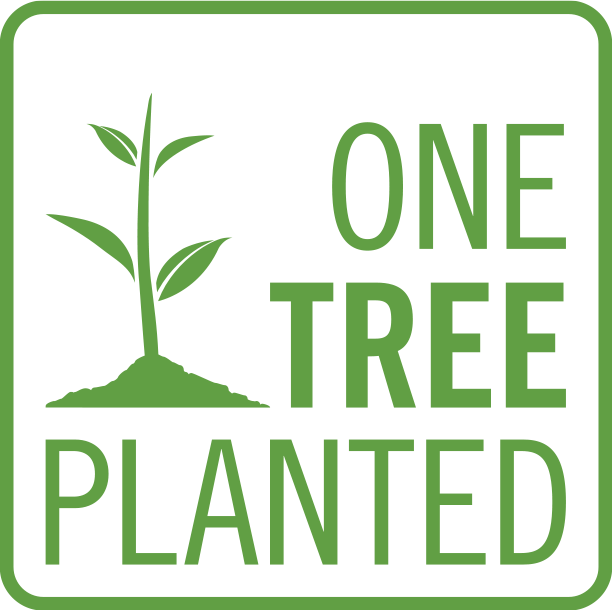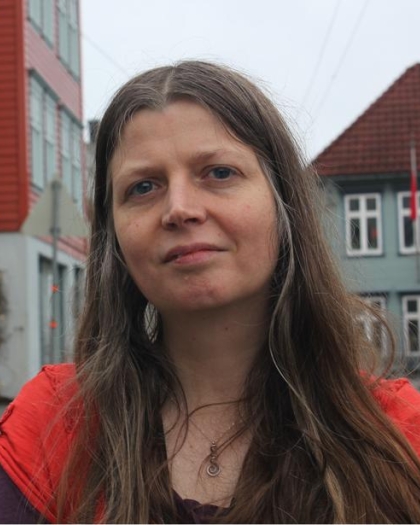The Baltic in the Bronze Age
Regional patterns, interactions and boundaries
Edited by Daniela Hofmann, Frank Nikulka, Robert Schumann | 2022

The Baltic in the Bronze Age
Regional patterns, interactions and boundaries
Edited by Daniela Hofmann, Frank Nikulka, Robert Schumann | 2022
Paperback ISBN: 9789464270181 | Hardback ISBN: 9789464270198 | Imprint: Sidestone Press Academics | Format: 210x280mm | 388 pp. | Language: English | 48 illus. (bw) | 94 illus. (fc) | Keywords: archaeology; Bronze Age; Baltic; large scale Interaction; exchange; contact; Baltic Sea; boundaries | download cover
Read online or downloaded 4481 times
-
Digital & Online access
This is a full Open Access publication, click below to buy in print, browse, or download for free.
-
Buy via Sidestone (EU & UK)
-
Buy via our Distributors (WORLD)
For non-EU or UK destinations you can buy our books via our international distributors. Although prices may vary this will ensure speedy delivery and reduction in shipping costs or import tax. But you can also order with us directly via the module above.
UK international distributor
USA international distributor
-
Bookinfo
Paperback ISBN: 9789464270181 | Hardback ISBN: 9789464270198 | Imprint: Sidestone Press Academics | Format: 210x280mm | 388 pp. | Language: English | 48 illus. (bw) | 94 illus. (fc) | Keywords: archaeology; Bronze Age; Baltic; large scale Interaction; exchange; contact; Baltic Sea; boundaries | download cover
Read online or downloaded 4481 times

We will plant a tree for each order containing a paperback or hardback book via OneTreePlanted.org.
The Bronze Age is a time of increasing interaction with large-scale connections that cover vast parts of Europe. Some parts and regions of the Bronze Age are very well explored and for some very strong narratives of hierarchisation and differentiation, dependence on external raw material supplies and specialisation have been proposed.
In other regions, however, only some of these aspects appear, even though networks of contact would at least have been possible. This is the case in the Baltic area, where western and eastern regions show dramatic differences in subsistence, the amounts of metal produced and deposited (and therefore presumably the social role of metal), the settlement pattern and scale of social groups. A particularly interesting question is the intensity of culture contact that the eastern Baltic regions entertained across the sea with Scandinavia and also with directly neighbouring continental regions.
This volume brings together scholars from all regions around the Baltic Sea to discuss different aspects of Bronze Age interactions. It offers a perspective on regional and interregional connectivity and exchange beyond the usual large-scale models discussed in Bronze Age archaeology and includes both case studies of individual regions or finds categories and broader overview papers focusing on the diversity of interconnections − and their sometimes striking absence.
Introduction: The Baltic in the Bronze Age world
Daniela Hofmann, Frank Nikulka, Robert Schumann
OBJECTS
Shared symbols and values. On Nordic disc pins and deposition practices in the eastern Baltic
Uwe Sperling and Daniel Sahlén
Local perspectives on innovation and dispersal of new technologies in northern foraging societies: lithics, ceramics and early metallurgy in northern Sweden
Lars Forsberg
Swords and sword-bearers across the Baltic Sea in the Early Bronze Age
Jan-Heinrich Bunnefeld
The arrowheads of the Tollense Valley. From use-wear analysis to the sequence of violence
Hella Harten-Buga; Birte Meller; Thomas Terberger; Frank Nikulka; Detlef Jantzen; Jörg Orschiedt
Craftspeople in the Late Bronze Age: bone and antler working at fortified settlements in the eastern Baltic region
Heidi Luik
Hoards, metallurgy and points. Proposal of an analytical tool for describing hoards with components related to metalworking
Marcin Maciejewski and Kamil Nowak
“Kannelurensteine” — balance weights of the Bronze Age?
Nicola Ialongo and Lorenz Rahmstorf
From the seaside to the inland. Comparing Late Bronze Age pottery production and styles in the eastern Baltic
Vanda Visocka, Vytenis Podėnas, Uwe Sperling
SITES, REGIONS AND LANDSCAPES
Settlement patterns in the Bronze Age western Baltic – comparisons at different regional scales
Jutta Kneisel, Stefanie Schaefer-Di Maida, Ingo Feeser
The emergence of fortified settlements in Bronze Age Lithuania: a new model
Algimantas Merkevičius
Interpreting Bronze and Iron Age enclosed spaces, fortifications and boundaries in the western Baltic
Jutta Kneisel, Inge Beilke-Voigt, Oliver Nakoinz
Stone Age–Early Metal Period transition in the southern Finnish lake district: incipient forest grazing and temporary burning practices
Kerkko Nordqvist, Teija Alenius and Chiara Molinari
The Bronze Age culture in Finland from the perspective of the 2020s
Mika Lavento
The Late Bronze Age to Early Iron Age transition in the lower Oder and the Oder lagoon region from settlement and environmental perspectives
Katarzyna Ślusarska
CONNECTIONS
Peripheral or non-peripheral? The “world view” of the Bronze Age people in the eastern Baltic
Agnė Čivilytė
Bronze Age globalisation in numbers: volumes of trade and its organisation
Kristian Kristiansen
Bloody warriors? The Tollense valley conflict and its relation to the Baltic Sea region
Detlef Jantzen and Gundula Lidke
Bronze Age cultural changes, population movements, and the formation of the Proto-Finnic ethnos
Valter Lang
Baltic stone ships. Monuments of a “maritory” in Late Bronze Age northern Europe
Joakim Wehlin

Prof. Dr. Daniela Hofmann
Daniela Hofmann is Professor of Archaeology at Bergen University, where she teaches and researches mainly on the Neolithic of Europe. Her current interests include migration, kinship, ritual, social inequality and resistance to it, as well as social contacts and change (see the forthcoming co-authored volume Negotiating migrations. The archaeology and politics of mobility, 2024, and the co-edited outreach publication Migration narratives in archaeology, 2023). In her projects, she tries to combine theoretical considerations with a variety of methods, including bioarchaeological information, in an effort to write narratives that take into account different perspectives. She hopes that knowing about diversity in the past could help us create a fairer society today, but has doubts on whether this is actually working.
Dr. Robert Schumann
Robert Schumann is currently substitute professor at Heidelberg University. Prior to that, the worked and researched in Hamburg, Berlin and Munich after receiving his PhD from Munich in 2014. His research interests include Late Bronze Age and Early Iron Age, social archaeology and social organisation, contemporary archaeology and the history of archaeology.
Prof. dr. Frank Nikulka
Frank Nikulka is currently Professor of Prehistoric Archaeology at the University of Hamburg. His main research interests include the Bronze and Iron Ages of Europe, as well as the Slavic period, the economic and social implications of metallurgy, variability in burial rituals and cultural contacts throughout Iron Age Europe.
Abstract:
The Bronze Age is a time of increasing interaction with large-scale connections that cover vast parts of Europe. Some parts and regions of the Bronze Age are very well explored and for some very strong narratives of hierarchisation and differentiation, dependence on external raw material supplies and specialisation have been proposed.
In other regions, however, only some of these aspects appear, even though networks of contact would at least have been possible. This is the case in the Baltic area, where western and eastern regions show dramatic differences in subsistence, the amounts of metal produced and deposited (and therefore presumably the social role of metal), the settlement pattern and scale of social groups. A particularly interesting question is the intensity of culture contact that the eastern Baltic regions entertained across the sea with Scandinavia and also with directly neighbouring continental regions.
This volume brings together scholars from all regions around the Baltic Sea to discuss different aspects of Bronze Age interactions. It offers a perspective on regional and interregional connectivity and exchange beyond the usual large-scale models discussed in Bronze Age archaeology and includes both case studies of individual regions or finds categories and broader overview papers focusing on the diversity of interconnections − and their sometimes striking absence.
Contents
Introduction: The Baltic in the Bronze Age world
Daniela Hofmann, Frank Nikulka, Robert Schumann
OBJECTS
Shared symbols and values. On Nordic disc pins and deposition practices in the eastern Baltic
Uwe Sperling and Daniel Sahlén
Local perspectives on innovation and dispersal of new technologies in northern foraging societies: lithics, ceramics and early metallurgy in northern Sweden
Lars Forsberg
Swords and sword-bearers across the Baltic Sea in the Early Bronze Age
Jan-Heinrich Bunnefeld
The arrowheads of the Tollense Valley. From use-wear analysis to the sequence of violence
Hella Harten-Buga; Birte Meller; Thomas Terberger; Frank Nikulka; Detlef Jantzen; Jörg Orschiedt
Craftspeople in the Late Bronze Age: bone and antler working at fortified settlements in the eastern Baltic region
Heidi Luik
Hoards, metallurgy and points. Proposal of an analytical tool for describing hoards with components related to metalworking
Marcin Maciejewski and Kamil Nowak
“Kannelurensteine” — balance weights of the Bronze Age?
Nicola Ialongo and Lorenz Rahmstorf
From the seaside to the inland. Comparing Late Bronze Age pottery production and styles in the eastern Baltic
Vanda Visocka, Vytenis Podėnas, Uwe Sperling
SITES, REGIONS AND LANDSCAPES
Settlement patterns in the Bronze Age western Baltic – comparisons at different regional scales
Jutta Kneisel, Stefanie Schaefer-Di Maida, Ingo Feeser
The emergence of fortified settlements in Bronze Age Lithuania: a new model
Algimantas Merkevičius
Interpreting Bronze and Iron Age enclosed spaces, fortifications and boundaries in the western Baltic
Jutta Kneisel, Inge Beilke-Voigt, Oliver Nakoinz
Stone Age–Early Metal Period transition in the southern Finnish lake district: incipient forest grazing and temporary burning practices
Kerkko Nordqvist, Teija Alenius and Chiara Molinari
The Bronze Age culture in Finland from the perspective of the 2020s
Mika Lavento
The Late Bronze Age to Early Iron Age transition in the lower Oder and the Oder lagoon region from settlement and environmental perspectives
Katarzyna Ślusarska
CONNECTIONS
Peripheral or non-peripheral? The “world view” of the Bronze Age people in the eastern Baltic
Agnė Čivilytė
Bronze Age globalisation in numbers: volumes of trade and its organisation
Kristian Kristiansen
Bloody warriors? The Tollense valley conflict and its relation to the Baltic Sea region
Detlef Jantzen and Gundula Lidke
Bronze Age cultural changes, population movements, and the formation of the Proto-Finnic ethnos
Valter Lang
Baltic stone ships. Monuments of a “maritory” in Late Bronze Age northern Europe
Joakim Wehlin

Prof. Dr. Daniela Hofmann
Daniela Hofmann is Professor of Archaeology at Bergen University, where she teaches and researches mainly on the Neolithic of Europe. Her current interests include migration, kinship, ritual, social inequality and resistance to it, as well as social contacts and change (see the forthcoming co-authored volume Negotiating migrations. The archaeology and politics of mobility, 2024, and the co-edited outreach publication Migration narratives in archaeology, 2023). In her projects, she tries to combine theoretical considerations with a variety of methods, including bioarchaeological information, in an effort to write narratives that take into account different perspectives. She hopes that knowing about diversity in the past could help us create a fairer society today, but has doubts on whether this is actually working.
Dr. Robert Schumann
Robert Schumann is currently substitute professor at Heidelberg University. Prior to that, the worked and researched in Hamburg, Berlin and Munich after receiving his PhD from Munich in 2014. His research interests include Late Bronze Age and Early Iron Age, social archaeology and social organisation, contemporary archaeology and the history of archaeology.
Prof. dr. Frank Nikulka
Frank Nikulka is currently Professor of Prehistoric Archaeology at the University of Hamburg. His main research interests include the Bronze and Iron Ages of Europe, as well as the Slavic period, the economic and social implications of metallurgy, variability in burial rituals and cultural contacts throughout Iron Age Europe.
-
Digital & Online access
This is a full Open Access publication, click below to buy in print, browse, or download for free.
-
Buy via Sidestone (EU & UK)
-
Buy via our Distributors (WORLD)
For non-EU or UK destinations you can buy our books via our international distributors. Although prices may vary this will ensure speedy delivery and reduction in shipping costs or import tax. But you can also order with us directly via the module above.
UK international distributor
USA international distributor
- Browse all books by subject
-
Search all books

We will plant a tree for each order containing a paperback or hardback book via OneTreePlanted.org.
You might also like:
© 2025 Sidestone Press KvK nr. 28114891 Privacy policy Sidestone Newsletter Terms and Conditions (Dutch)








